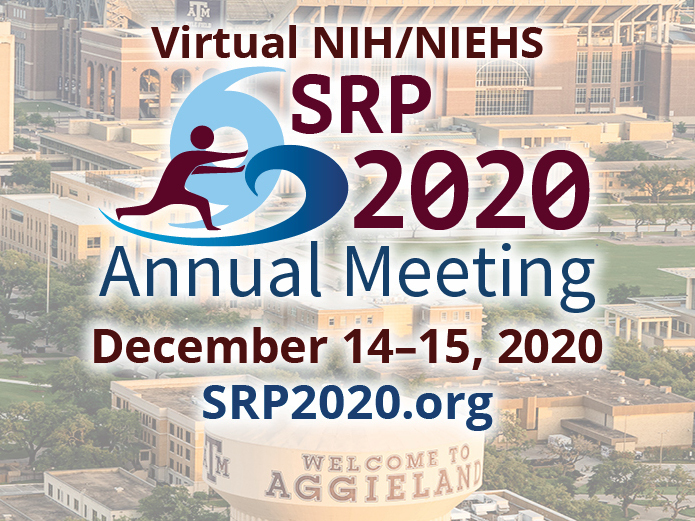Texas A&M Superfund Research Center Hosts Annual Program Meeting, More Than 650 Attendees
More than 650 people from across the United States attended the 2020 Annual Meeting of the National Institute of Environmental Health Sciences’ (NIEHS) Hazardous Substance Basic Research and Training Program (Superfund Research Program) on Dec. 14-15, during which researchers from across the country came together to showcase and discuss the latest research and accomplishments in environmental health and biomedical sciences.

The Superfund Research Program provides practical, scientific solutions to protect health, the environment, and communities.
As part of the NIEHS, an institute of the National Institutes of Health (NIH), the Superfund Research Program works to learn more about ways to protect the public from exposure to hazardous substances, such as industrial solvents, arsenic, lead, and mercury. These and other toxic substances are found in contaminated water, soil, and air at hazardous waste sites throughout the U.S.
The NIEHS-funded Superfund Center at Texas A&M University was the host for the program-wide meeting. Originally scheduled to be an in-person even held at the Texas A&M Hotel and Conference Center, the meeting was converted to a virtual format, with the original program kept largely intact.
This event attracted twice the number of the usual university-hosted annual meeting, with 672 registered participants and 264 abstracts submitted by scientists at more than 30 U.S. universities. In addition, more than 170 trainees presented their posters in four sessions and 11 trainees gave oral presentations.
This year, the meeting focused on two themes.
Day one addressed hazardous substance exposures at the community level and the solutions offered by the Superfund Research Program.
Juan Parras and Nalleli Hidalgo, from Texas Environmental Justice Advocacy Services (t.e.j.a.s.), detailed the work of their non-profit in marginalized communities in Southeast Texas that suffer from a high burden of environmental injustice. They also presented a “Toxic Tour” around several residential areas in Houston.
A discussion after the presentation centered on the partnerships between t.e.j.a.s. and Texas A&M scientists, including those in the Superfund Center.
Additionally, oral presentations by four trainees described examples of community-informed research at other Superfund Centers across the country and how the science is translated to addressing environmental health vulnerabilities of disadvantaged communities.
Day two was focused on the Superfund-funded science that is meeting the challenges of environmental protection in the 21st century. Recent advances in biomedical and environmental science, including data science, opened new frontiers in the ability of scientists and decision-makers to better characterize exposures and their potential adverse health effects.
Dr. Russell Thomas, of the U.S. Environmental Protection Agency (EPA) presented a keynote address on the agency’s path toward more rapid, efficient, and protective chemical testing with fewer animals.
Additional trainee presentations detailed data science-driven research projects that address the challenges of environmental protection within 21st-century science.
In spite of the challenges and hardships due to the Covid-19 pandemic, the Superfund Research Program remains strong and delivers results that are used by a wide range of stakeholders, from the impacted communities to regulatory agencies.
###
For more information about the Texas A&M College of Veterinary Medicine & Biomedical Sciences, please visit our website at vetmed.tamu.edu or join us on Facebook, Instagram, and Twitter.
Contact Information: Jennifer Gauntt, Director of CVMBS Communications, Texas A&M College of Veterinary Medicine & Biomedical Sciences; jgauntt@cvm.tamu.edu; 979-862-4216


